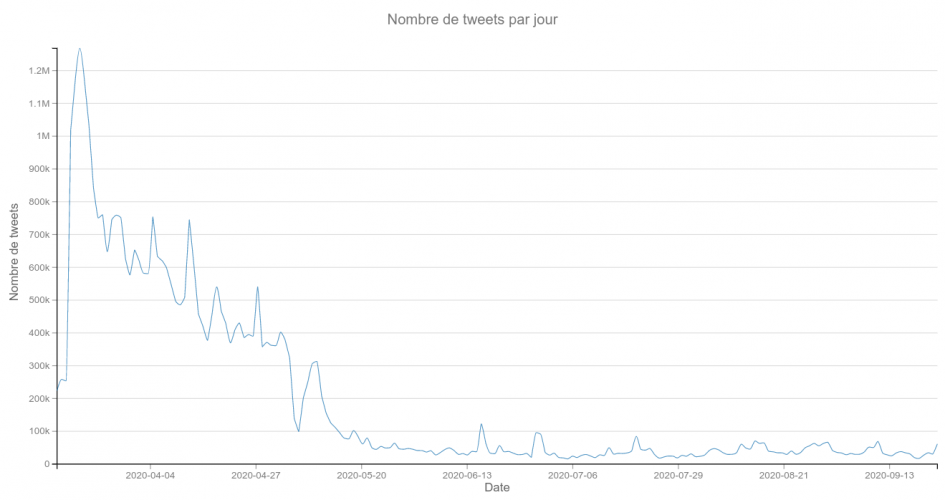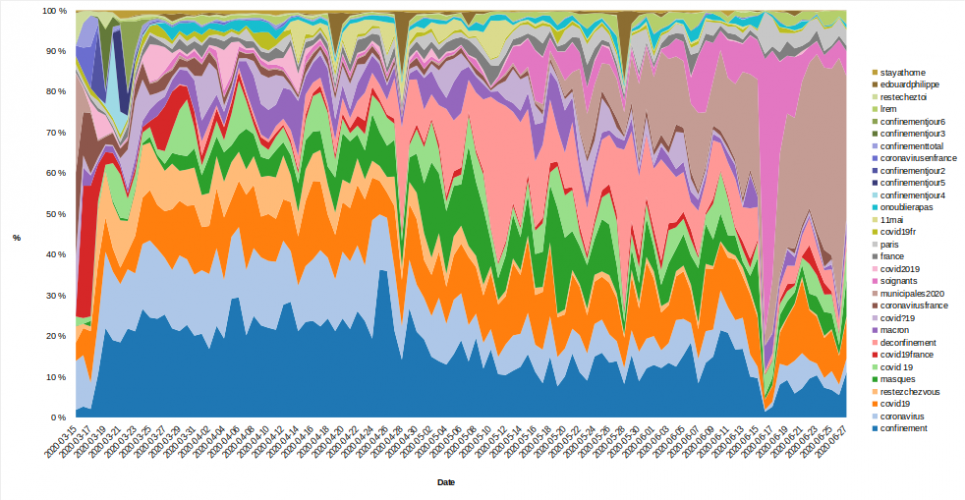Social media and the process of memorialising a pandemic
#covid19fr
The #covid19fr project began on 15 March 2020, when the announcement of unprecedented lockdown measures in France, Belgium and Luxembourg appeared to be all but certain.
The project involves collecting tweets on the basis of keywords in French. Its launch was guided by an intuition that this health crisis was a remarkable moment in the history of humanity, together with a strong sense that historians had to start preparing to write the history of the ongoing pandemic. By early January 2021, more than 44 million tweets had been collected, the vast majority written in French and most from within France.

The collected tweets can be considered as traces, primary sources left behind by our present to facilitate future understanding of what will become the past. Collecting tweets is a way of understanding how the memory of this episode is being structured and which events in particular are serving as milestones. To monitor this process of memorialising the pandemic, we intend to continue collecting tweets for several years. Twitter enables us to observe multiple aspects – political, cultural, economic and social – of our daily lives. The #covid19fr project will give us an insight into the daily lives of French-speaking Europeans in lockdown. Twitter is a paradigmatic platform for our times, with its constant quest for updates and news, for life in real time, as it happens. And it is the interaction between this present which is being constantly updated on Twitter and the historic nature of the pandemic that is resulting in the real-time construction of memories of the event.

Initial analyses have been performed on the data collected for the #covid19fr project using digital humanities techniques, especially text mining. The graph below shows how use of the most popular hashtags changed over time from March to June 2020. It illustrates a clear responsiveness to current events: the term “soignants” (healthcare workers) was widely used in June 2020, when a demonstration was held in support of public hospitals in France and images showing the violent arrest of a nurse were broadcast on French national TV channels.

The #covid19fr project has led to a partnership agreement with Ca’ Foscari University of Venice. Joint research will enable comparisons between our French-language database and a database of tweets in Italian, paving the way for an analysis of how France and Italy viewed and judged themselves during the crisis and for potential observations on the similarities or differences between memorialisation processes in the two countries.

